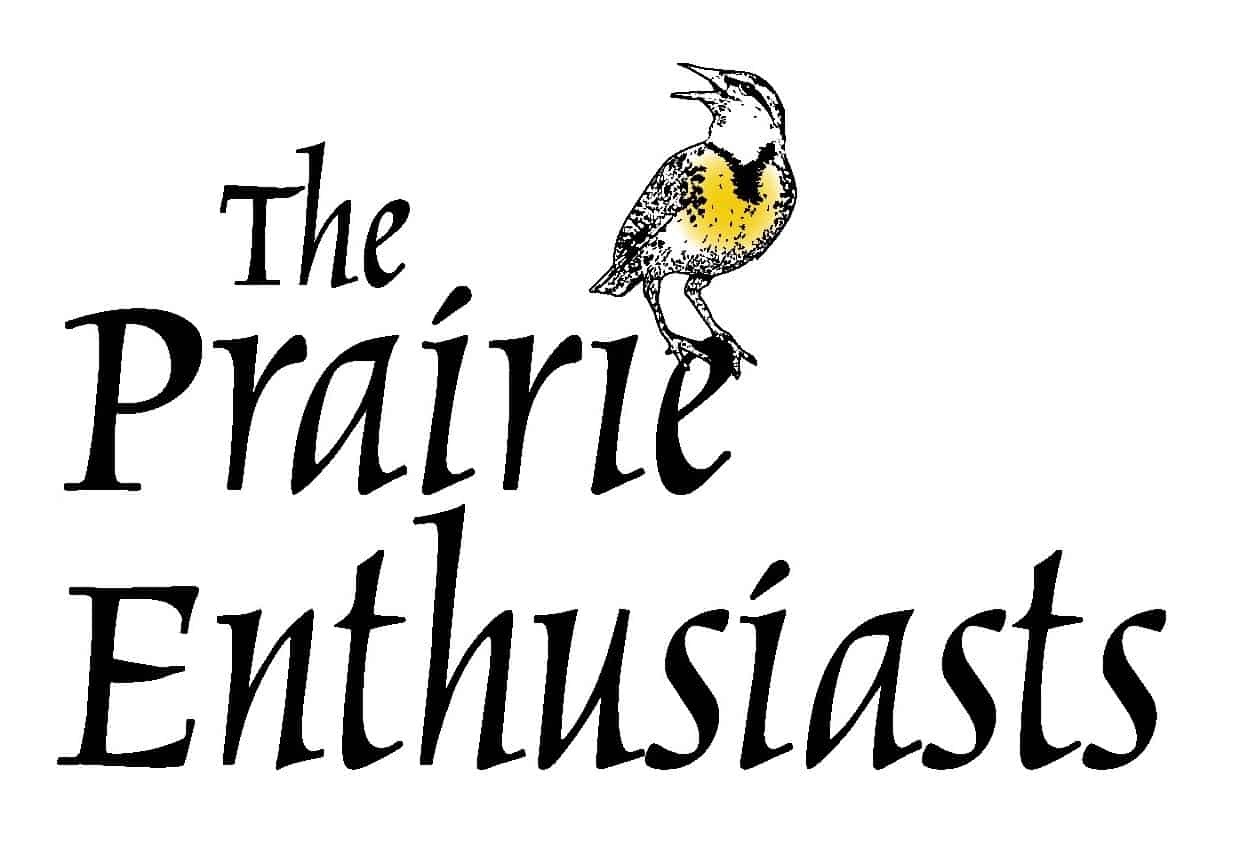Landowner Services Coordinator Dan Carter writes about some special moments from the highly successful first year of TPE’s Landowner Services program.
Dan’s schedule for 2021 is almost full. Email landowners@theprairieenthusiasts.org as soon as possible to discuss a visit to your property.
For each of us in our own way, it’s been a tough year. We’ve shelved the activities we love, seen less of the people we care most about, and suffered loss. The future seems more uncertain and the world less recognizable. That’s why getting out and visiting landowners this season has been such a privilege. The wild has never been a more important sanctuary. Each visit has been a reminder that there are people out there with whom we share values, who are doing what they can to carry forward our natural and cultural heritage. The successes are moving, and the challenges are sobering. We have community in the prairie. And there is room for that community to grow.
I was unsure early on how much interest there would be in the Landowner Services program, but the work picked up quickly. Between late May and mid-October, I visited 66 properties belonging to private landowners in three states and in every chapter’s domain. My goal was 50!
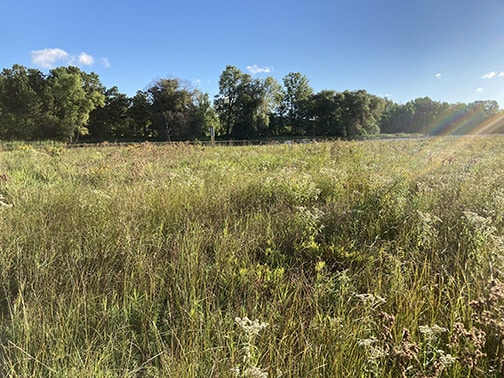
The Bennett property in central Wisconsin. Photo by Dan Carter
Visit content was extremely varied. Some landowners are considering new prairie plantings; others are restoring (or considering restoring) existing prairies, oak savannas, oak woodlands, sedge meadows, or fens. Many properties have yielded new discoveries, both good and bad. For just about everyone, though, invasive alien species and aggressive native species are burdens. Getting enough fire on the land is also an obstacle.
This summer, I shared some of my early travels on TPE’s blog. There have been more since that time than I have room to share, but here are a few highlights from various corners of TPE.
In mid-July, I visited Kurt Peters and Elizabeth Hopp-Peters at their property in far western Green County, Wis. The main focus of that visit was the ongoing conversion of a sandy old field into prairie and the restoration of some black oak woodland and savanna. As I walked the perimeter of the old field, an interesting plant caught my attention between the path and the woodland edge. It turned out to be hairy pinweed, a special concern species with only one other known occurrence in the state. This plant, though it may look nondescript, is among the rarest native plants in Wisconsin. The only other known occurrence in the state is in Iowa County.
Historically, the woodland adjacent to the old field had been an open savanna or barrens. The hairy pinweed presumably happened to have been among the species that managed to colonize the edge of the old field before the savanna canopy closed and brush moved in. Other remnant vegetation included goat’s-rue, narrow-leaved pinweed, bird’s-foot violet, and hoary frostweed.
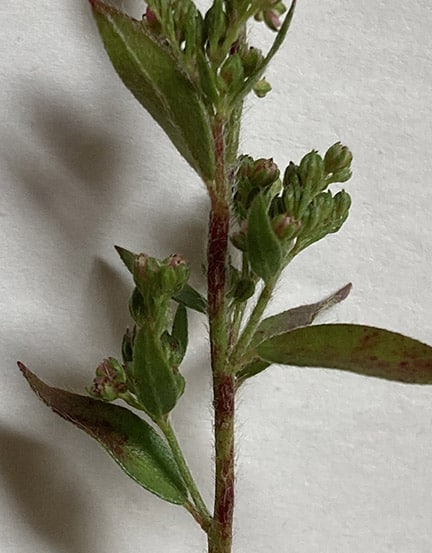 Hairy pinweed. Photo by Dan Carter
Hairy pinweed. Photo by Dan Carter
In September, I visited Barb and Dan Le Duc, who have a somewhat similar property in Eau Claire County, Wis. They’re also working to augment the diversity of a sandy old field next to a Hill’s oak woodland. The old field had been colonized by many interesting native species including fork-tip three-awn grass, narrow-leaved pinweed, hoary frostweed, Great Plains sand sedge, and rock spikemoss.
In late July I went to Brad Gaard’s property near New Ulm, Minn. The main foci of the visit were some existing and planned conservation plantings, but the highlight for me was a small bluff-top bur oak woodland above the Cottonwood River. There, an abundance of hairy meadow-parsnip (state special concern) grew at its northern range limit at the top of the bluff. The woodland also supported some particularly nice grass species, including black-seeded ricegrass and long-awned wood grass (farther southwest than any documented occurrences in the state).
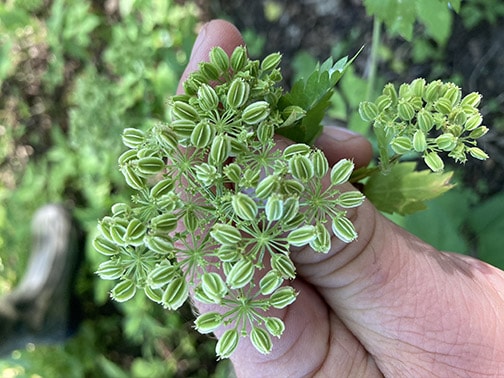 A fruiting hairy meadow-parsnip. Photo by Dan Carter
A fruiting hairy meadow-parsnip. Photo by Dan Carter
Among my last several visits was the Dale and Kim Karow property near Fort Atkinson, Wis., well-known for its exceptional remnant prairie, calcareous fen, and sedge meadow communities. (See the forthcoming issue of The Prairie Promoter to learn about Kim Karow’s legacy of stewardship.) Despite being a well-botanized property, the site offered up several new finds including new county records of Greene’s rush and large path rush, both firsts for me. And as I walked the site with Walter Mirk and Dale, there were four kinds of gentian blooming: greater fringed, lesser fringed, stiff, and bottle. Several dozen Great Plains lady’s-tress orchids were also in flower. These orchids typically flower in late September and have corolla lips flushed with yellow (variable), with lateral sepals spreading and curving upward. They are leafless when flowering, and have bracts that usually overlap on the upper stem.
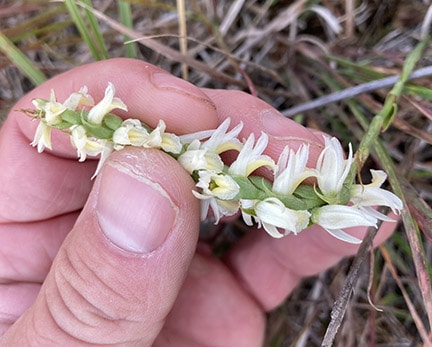
Great Plains lady’s-tress orchid. Photo by Dan Carter
My other photos are from Laurel and Alan Bennett’s property in Marquette County, Wis. (where they have successfully controlled reed canary grass in lower areas using Craig Annen’s systems approach, which in this case involved grass-selective herbicide and burning) and the Brian and Sheila Schils property in Pierce County, Wis.
If you’re considering a new project or simply want to walk and talk about your property, email landowners@theprairieenthusiasts.org soon to schedule a visit. My schedule for next year is already about one-third filled. In your initial email, include a little bit of background and location information for your site. Also, if you have success stories dealing with common problems like brambles, Canada or tall goldenrod, warm-season grass dominance, and the many varieties of invasive species, accounts of your successes would be welcome. Published science informs a lot of restoration and management, but anecdotes are where much of our collective knowledge resides.
Take care this fall and winter, get outside, and kill as much invasive woody vegetation as possible.
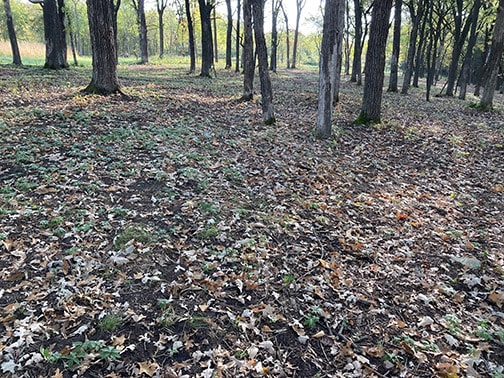
Above: In late September I visited Brian and Sheila Schils. We were joined by Abby Mueller, intern with the St. Croix Valley Chapter. The Schils’ bur oak woodland has been impeccably prepared for seeding by cutting and treating buckthorn throughout. Photo by Dan Carter

